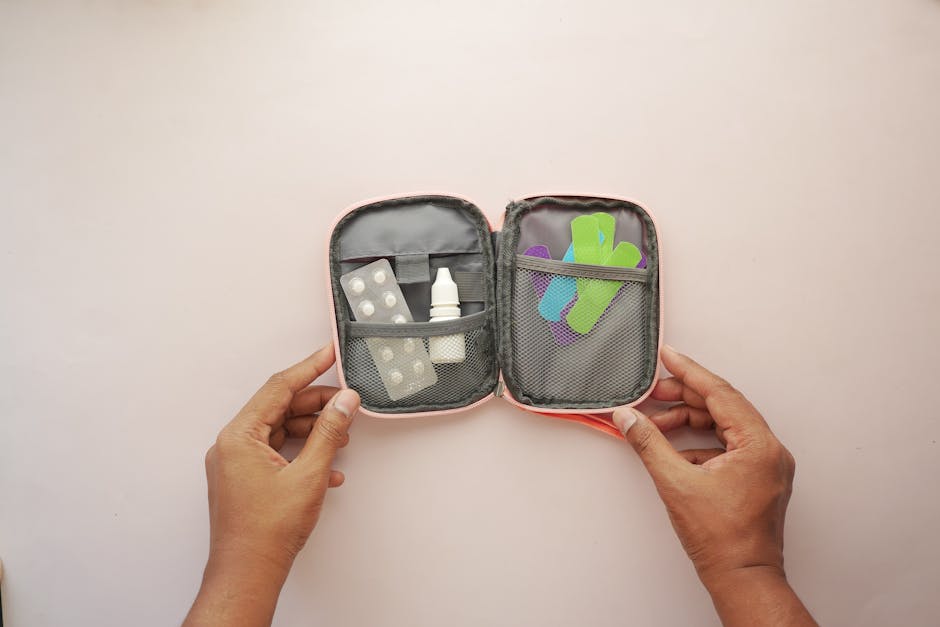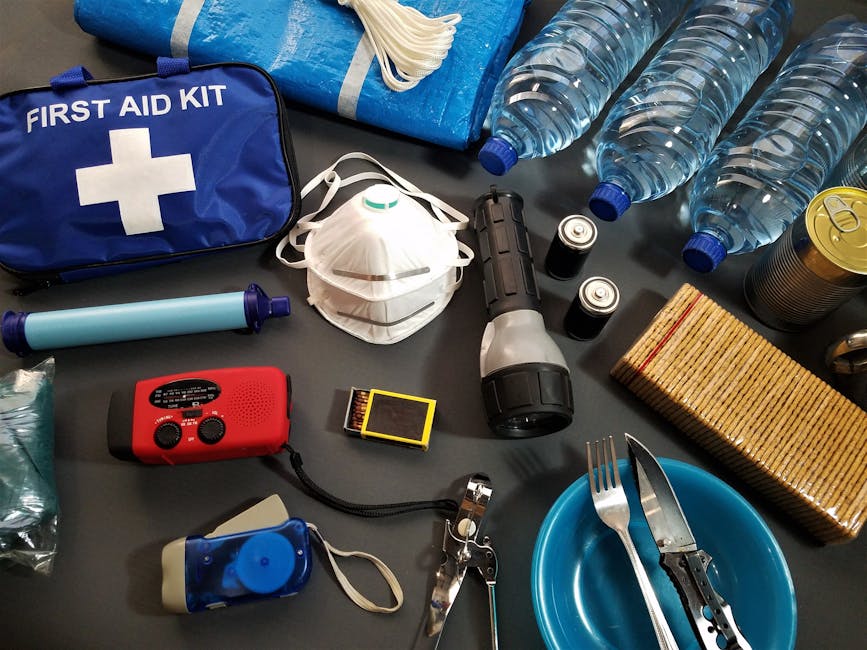Whether you’re hiking in the woods, road-tripping, or relaxing at home, being prepared for canine emergencies isn’t just smart—it’s an act of love. At DogDog, we know firsthand how quickly an ordinary day can turn into a frantic moment when your dog gets a scrape, a tick, or even just an unexplained tummy ache. Creating your own DIY dog first aid kit is a powerful, budget-friendly way to protect your best friend and empower yourself. Here’s how we approach it, with insights drawn from shelter experiences and real-life dog lovers—like you.

Why Every Dog Lover Needs a First Aid Kit
Emergencies don’t check your calendar. From minor everyday cuts to urgent allergic reactions or unexpected shivers, having a canine first aid kit isn’t just for the pro-level outdoors person or trainer—it’s for every dog guardian. Shelter teams often emphasize that quick, calm action can mean the difference between a simple fix and an expensive, stressful episode at the vet. The best part? You don’t have to buy a fancy kit; you can DIY a complete set for much less (typically under $50), with plenty of shelf-stable supplies you’ll actually use.
Essential Items for a DIY Dog First Aid Kit
- Absorbent Gauze (Sterile Pads & Rolls): For wrapping wounds or controlling bleeding. Non-stick is best, as fur can make changes tricky.
- Medical Tape or Self-Adhering Bandage (“Vet Wrap”): To secure gauze without sticking to fur.
- Antiseptic Wipes or Solution: Pet-safe wipes or diluted chlorhexidine—never hydrogen peroxide for open wounds unless your vet instructs.
- Blunt-Tipped Scissors: Cutting bandages or hair safely, especially near skin.
- Tweezers or Tick Remover: Removing ticks, thorns, or debris gently.
- Disposable Gloves: Because you want to protect yourself and keep wounds clean (plus, they’re handy for all medical messes).
- Digital Thermometer: Ear or rectal, with pet-safe lubricant. Normal dog temp: 101-102.5°F (38.3–39.2°C).
- Styptic Powder or Pencil: Stops nail bleeding quickly.
- Emergency “Muzzle”: Even the gentlest dogs can snap when frightened or in pain—use a soft wrap, leash, or a commercial muzzle.
- Saline Eye Wash: To flush dirt or debris from eyes or wounds.
- Foil Emergency Blanket: For warmth, shock prevention, or on cold hikes and winter walks.
- Medications: Add vet-approved antihistamine (like Benadryl—dose varies by weight) and a small tube of antibiotic ointment. Bring any prescribed meds your dog needs in a dated, labeled baggie.
- Water and Collapsible Bowl: For hydration after injury or heat exposure—essential on hikes or long car trips.
- Towel: Multi-use—for restraint, makeshift stretcher, drying, or warmth.
- Dog Treats: For calming or rewarding your pup during stressful interventions.
- Printed Medical Records & Vet Contacts: Emergency numbers, proof of vaccination, and allergies sealed in a ziplock.
- Current Photo of Your Dog: In case you are separated in a chaotic event—easy to show rescuers or share online fast.
Budget-Friendly Assembly: How Shelter Instincts Save Money

At DogDog, we learn a lot from shelters, where every dollar and every item in the supply closet is stretched. The trick to a low-cost dog first aid kit isn’t the “pet boutique sector”—it’s using what you already have and visiting discount or surplus shops.
| Essential Item | Shelter/DIY Option | Money-Saving Tip |
|---|---|---|
| Storage Box | Lunchbox, tackle box, dollar store tub | Waterproof and portable is what matters most—not the label |
| Bandaging Materials | Bulk gauze & tape from medical aisle | Much cheaper than pre-packaged “pet” kits |
| Thermal Protection | Foil space blanket from camping section | 1/5 the price of pet brands, just as effective |
| Printable Records | Handwritten index card, plastic bag | Save on laminating, easy to update |
| Tick Tools & Gloves | Kitchen tweezers, latex gloves | Already in most homes |
Easy-to-Overlook but Essential Extras
- Medication Pouch: Enough for three days (with dates). Rotate every 3-6 months, especially if you travel.
- Allergy Card: If your dog reacts to bees, certain foods, or medications.
- Contact Sheet: List of local 24/7 emergency vets, poison control, and pet-friendly taxis in your neighborhood or travel route.
- Probiotics or “Gut Soother”: For sudden upset stomachs on walks or trips—ask your vet for the right type.
How to Store & Maintain Your Kit (and Actually Use It!)
Shelter experience reminds us: a kit left at the back of the cabinet, half-expired and buried under holiday decorations, is as good as useless. Here’s our tried-and-tested advice:
- Keep your first aid kit with your dog’s leash or near the door—ready for walks, travel, or sudden emergencies.
- Use bright tape (like neon duct tape) to mark your kit, so you and any family member can grab it quickly—especially important if someone else needs to help your pet in your absence.
- Set a recurring phone reminder to check expiry dates and replenish what’s missing every few months (rotate as you use things like ointments or treats).
- Practice—once a quarter, pretend there’s an emergency. Can you open your kit and find what you need in under a minute? Does your household know where it is?
- If you have multiple dogs or breed-specific needs (think: extra muzzles for flat-faced breeds; smaller bandages for little paws), customize each kit accordingly.

What to Never Include (and Emergency Protocols)
Tempted to toss in some old human meds “just in case”? Please don’t. Many human drugs—including common pain relievers like ibuprofen, aspirin, or acetaminophen—are dangerous or even deadly to dogs. Always ask your vet before including any medication you’re unsure about. The best rule of thumb: if it isn’t recommended directly by your vet or included for your dog’s specific needs, leave it out.
Also, only induce vomiting if your veterinarian or animal poison control tells you to (never “just in case”). When in doubt, call for professional help. That’s why your contact list is so important!
Our DogDog Perspective: Compassion First, Always
For us, dog welfare isn’t an afterthought—it’s why we exist. The same drive that powers every search on DogDog, raising money for shelter meals and medical checks, is what inspires us to share practical tips for dog lovers everywhere. Every member of Cesar’s pack (and our own team) wants dogs to feel safe, fed, and cared for. That starts with being prepared—not just hoping for the best.
Printable Checklist: Your DIY Dog First Aid Starter List
- Absorbent gauze pads & roll
- Vet wrap/medical tape
- Antiseptic wipes/solution
- Blunt scissors & tweezers
- Digital thermometer & lubricant
- Disposable gloves
- Styptic powder/pencil
- Towel & emergency space blanket
- Collapsible bowl & water supply
- Muzzle or soft tie
- Pet-safe antibiotic ointment & antihistamine (dose per vet)
- Dog treats
- Medicines (3-day supply, dated)
- Printout: vet, emergency contacts, allergies
- Recent photo of your dog
One Last Thing: Every Small Action Matters
We’re here to support you as you support your own dog—and dogs in need everywhere. Whether it’s packing a simple first aid kit or donating a search on DogDog, little actions ripple out to bigger changes. Thank you for being the kind of person who prepares and who cares. Looking for more dog safety tips, wellness info, and adorable adoption stories? Check out our resources at DogDog.org, and don’t forget: every web search can help dogs live their best lives.
